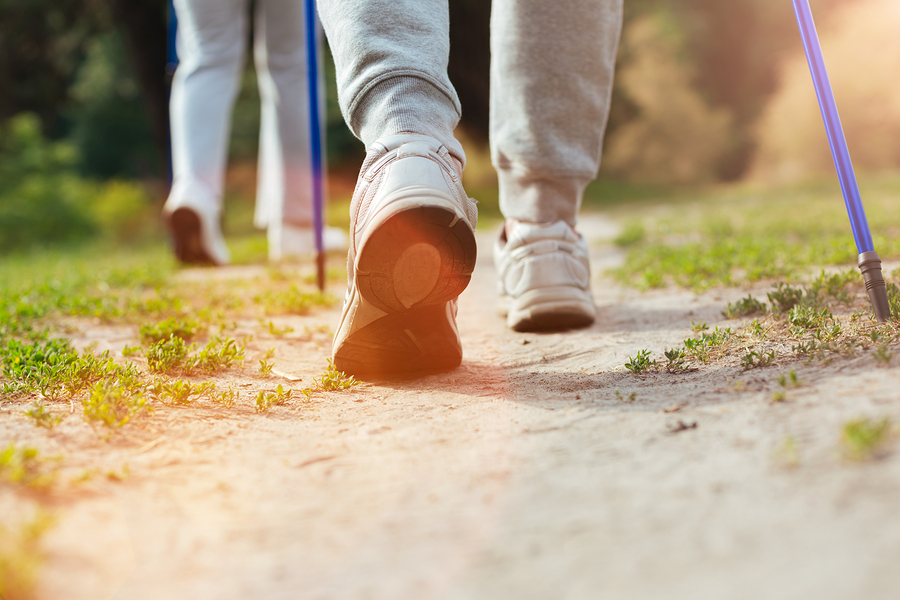4 simple forms of exercise you can easily fit into your day
Wish you were fitter but can’t stand the thought of joining a gym? Here are a few simple ideas to get you started.
Most of already know there are good reasons to exercise – from improving your energy and boosting your mood, to losing weight and cutting your risk of serious health issues.
Now there is an additional incentive for us to get fitter fast. In response to a review which found people who are overweight or obese are at a significantly higher risk of hospitalisation or death from Covid-19, UK Prime Minister Boris Johnson is leading a campaign urging us to lose weight and improve our health.

Boris Johnson has launched a strategy to get more people exercising
Johnson has said he has struggled with his own weight in the past but has lost at least a stone after recovering from coronavirus and making exercise part of his daily routine.
He stresses that the key to keeping fit is in making exercise a habit – so losing weight doesn’t have to mean repping through rounds of torturous burpees.
Here is a look at four simple forms of exercise you can easily build into your daily routine, and the benefits each one offers.
1. Swimming
 Swimming is an excellent way to work your entire body and cardiovascular system.
Swimming is an excellent way to work your entire body and cardiovascular system.
“You don’t need to spend much money to build a few swims into your weekly routine, especially if you sign up to a membership at your local leisure centre,” says Sam Gregory, head trainer at F45 Stratford.
Gregory says the water-based sport is especially good for people who have problems with their joints, as it keeps your heart rate up and has a much lower impact on your knees than running or walking.
“It’s particularly good for toning up your whole body, but you can expect to build-up your shoulder, arm and core strength over time.
“Swimmers burn around 400 calories per hour in the pool, but this can vary depending on the person,” he adds.
Find out more about the health benefits of swimming here
2. Jogging

Just because jogging feels mellow, it doesn’t mean you aren’t reaping the physical and mental perks of exercising. Running, even at a slow pace, is a form of cardio – which is beneficial for weight loss as you’re expending energy as you go.
“You don’t need any equipment or an expensive gym membership to reap the benefits of running, which are two of the main benefits to taking up this sport,” says Gregory.
He adds: “You can expect to burn around 100 calories per mile, and it’s also great for your mental health, especially if you are somewhere in the countryside, as being out in the open air can really help you to switch off.”
Regular exercise, no matter the intensity, can also help improve the length and quality of your sleep, studies have suggested – which might be particularly beneficial to those who have struggled to get a full eight hours during lockdown.
Find out more about the 5K Challenge here
3. Walking

“Getting out for a 45-minute power walk during your lunch break is a great starting point to begin building on your fitness, and can burn between 200 to 300 calories per session,” says Ian McCaig, co-founder of Fiit.
While it might not be as effective as HIIT sessions when it comes to rapid weight loss, walking is an accessible way to keep fit, and you can easily build it into your daily routine without feeling like it’s a major chore.
Gregory says walking can increase your Non-Exercise Activity Thermogenesis (NEAT) – the energy expended for everything we do that is not sleeping, eating or sports-like exercise. “This is a nice way to boost your calorie burn without feeling like you’re breaking a heavy sweat,” he adds.
An easy strategy for building walking into your routine is to leave the house a bit earlier each day so you can avoid unnecessary car or bus journeys and commute – either all or part of the way to work – on foot instead.
Find out more about the health benefits of hiking here
4. Cycling

Cycling is a top priority in Boris Johnson’s drive to tackle obesity in the fight against coronavirus – and with good reason too.
“Whilst walking and jogging build on your stamina, cycling is a great calorie burner equalling between 400 to 600 calories during an hour-long session,” says McCaig.
As well as helping you lose weight, the resistance involved in cycling means that it builds muscle – particularly around the glutes, hamstrings, quads, and calves. And it’s a good cardiovascular sport too, as it raises your heart rate and gets the blood pumping around your body.
A great way to incorporate cycling into your routine is to try taking your journeys by bike, such as your commute or trips to the supermarket.
“Daily exercise has such an important part to play within developing a maintained healthy lifestyle,” says McCaig.
Rather than thinking of your workouts as an all-day endurance feat, he believes that it’s better to build manageable, functional exercises into your daily routine.
“Small bursts of regular exercise throughout the day are vital in maintaining a balanced lifestyle,” adds McCaig. “We need to shift habitual attitudes towards exercise encouraging little and often.”
The Press Association
Latest posts by The Press Association (see all)
- Actor Richard Chamberlain dies aged 90 - March 30, 2025
- 5 new books to read this week - March 26, 2025
- 6 things a physio wishes people over 60 would stop doing - March 25, 2025
- NHS reminder to 7.5m people as Covid-19 jab booking system opens - March 25, 2025
- The truth about cholesterol – what you need to know - March 25, 2025




















